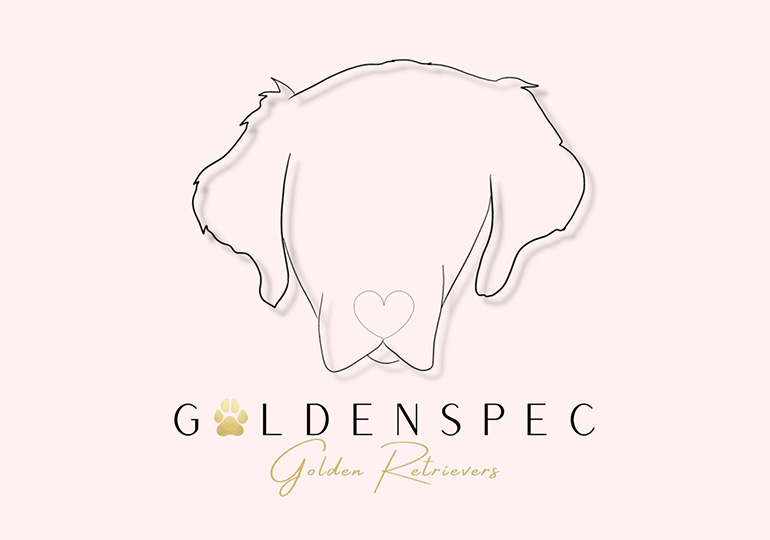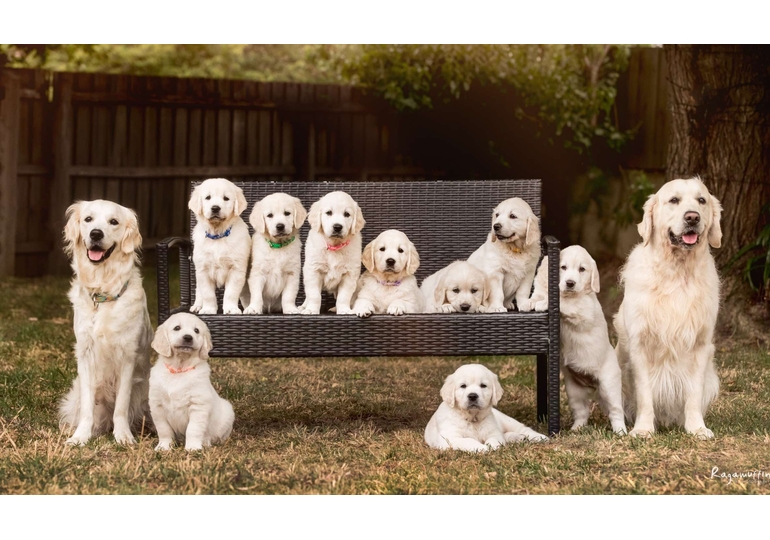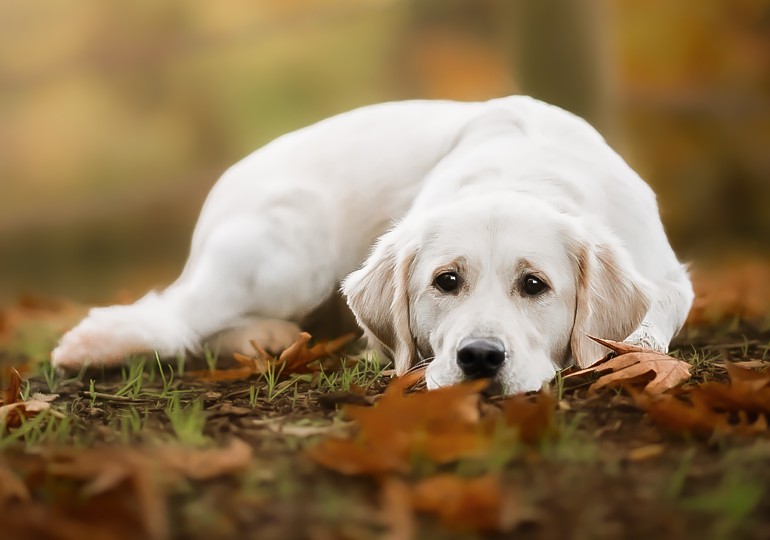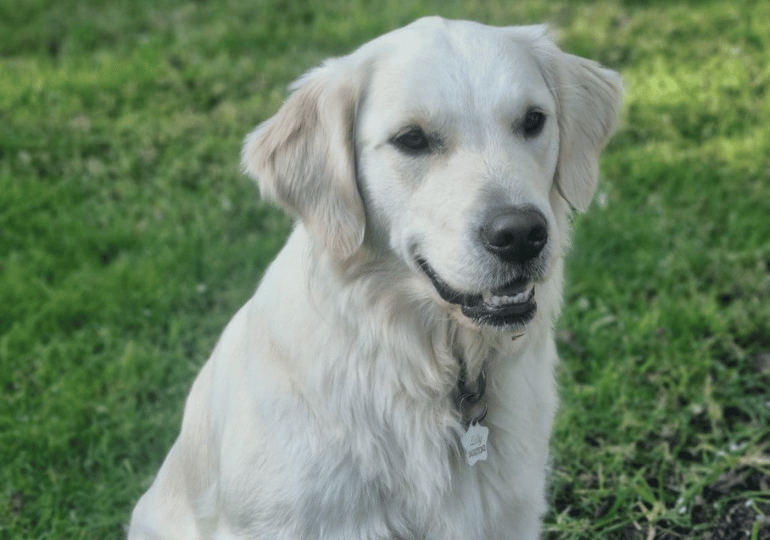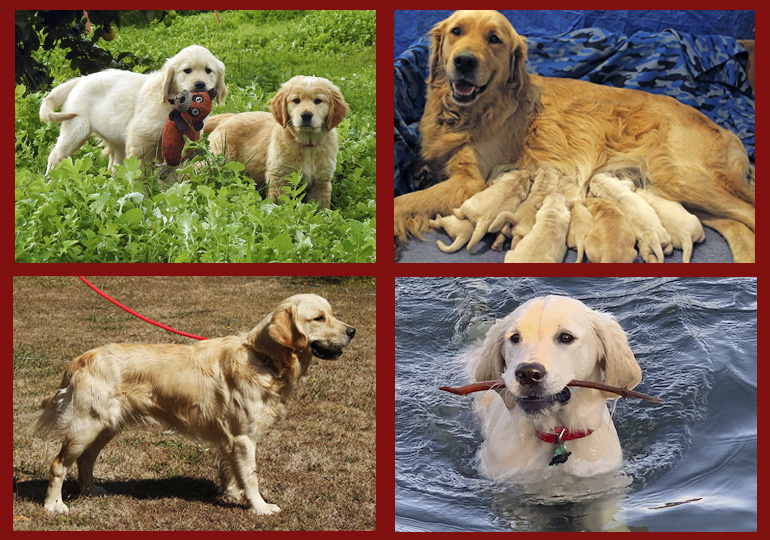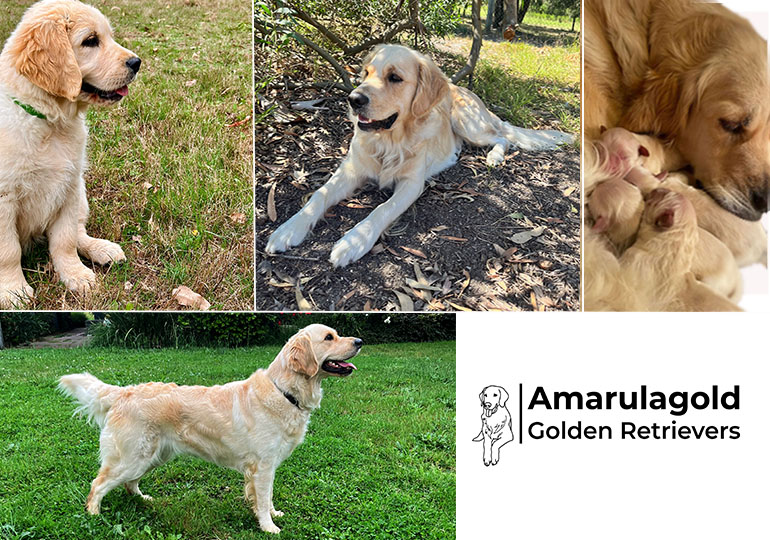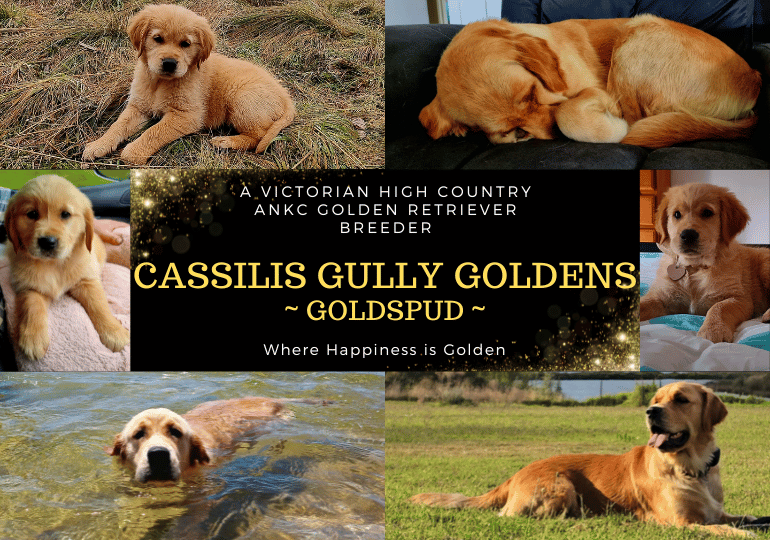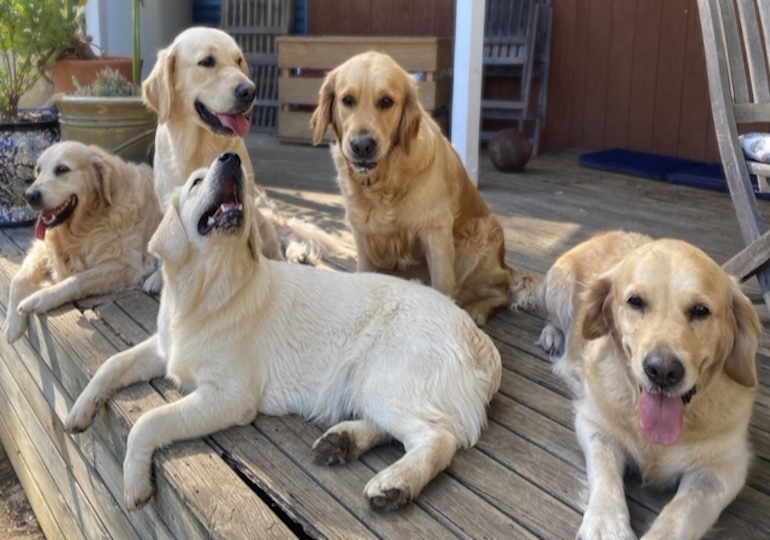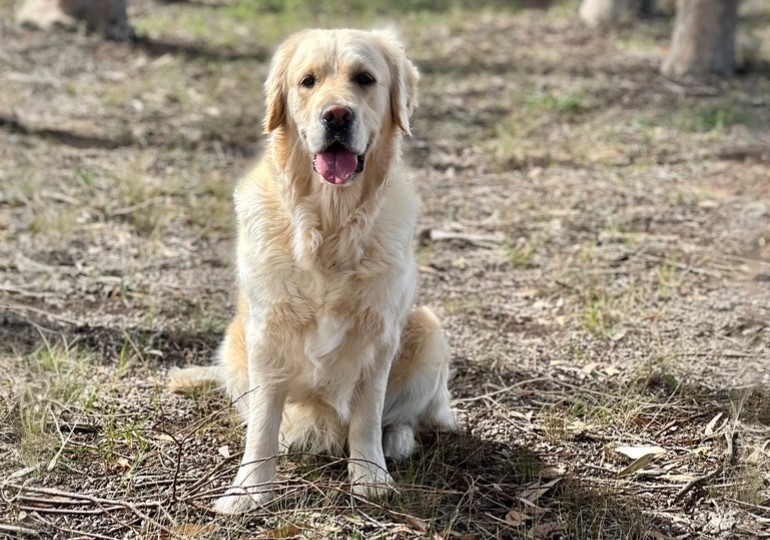Breeds
Golden Retriever
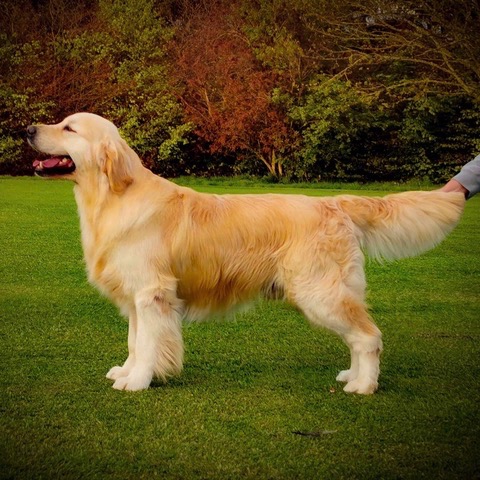
GROUP 3 - GUNDOGS
Brief History
The Golden Retriever was first developed in Scotland at the country estate of Lord Tweedmouth during the 1860’s. The aim was to create a dog better suited to the task of retrieving game from both water & land in marshy areas, through the structured breeding of water spaniels, setters and retrievers. They were officially recognised as a breed by the English Kennel Club in 1920 and were first imported and registered in Australia during the 1930’s.
Average Life Span
When considering a dog, please realise that you are taking it on for its lifetime.
The average life span is 10 to 15 years.
Temperament
The Golden Retriever is an intelligent, active dog with a kindly expression and a gentle, affectionate nature. They should be calm and biddable and are eager to please.
General Breed Description
Golden Retrievers make excellent companions. They need to closely interact with their owners and be regularly included in family activities, as they thrive when taking part in fun activities with their owners. They are not a breed to leave in a backyard for too long, preferring to be active, happily spending lots of time at the beach or park, playing and retrieving a ball or frisbee. Basic training is an important part of responsible dog ownership, so they will learn to be well mannered and obedient. They are great competitors in Obedience, Agility, Rally, Flyball and other dog sports.
Goldens have a double coat which is wavy and water resistant, in colours ranging from shades of cream to deep gold.
Coat and Care Requirements
Regular grooming such as bathing, brushing, and combing is essential to maintain your Golden Retriever’s luxurious, shiny coat, and this also reduces the quantity of hair that is shed and prevents matts from developing.
Size
Height: Males 56 to 61cms (22 to 24ins), Females 51 to 56cms (20 to 22ins).
Health
All breeds have individual health issues. When speaking to breeders it is recommended you enquire about the breed’s health and what health testing the breeder does. The Golden Retriever is generally a healthy breed, however health conditions do occur occasionally. These may include Hip Dysplasia (HD), Elbow Dysplasia, Progressive Retinal Atrophy (PRA) and Hereditary Cataracts (HC) as well as DNA testing for a range of conditions. The National Golden Retriever Council has some useful information sheets. https://ausngrc.org/health-matters/
Suitability
Golden Retrievers are an ideal family pet for all owners and are good with other pets. They are happiest when they are included in family activities and do not like being left alone for long periods. They are best suited to active people, as they do require regular exercise, whether that be a long walk, a game of fetch or a swim. They are easily trained and eager to please, happy to do whatever is asked of them.
In Conclusion
Now you know a little more about this breed. If you have decided this is the dog for you and wish to investigate further, please contact the Breed Club or Dogs Victoria. They will be able to give you information about available puppies and also suggest dog events where you can see the breed and speak to breeders. In this way you will gain a better perspective of the breed and its needs. With any breed of dog, it is important to research and determine suitability for your lifestyle before committing to a puppy which will be a part of your family for many years to come.
Whilst many breeds are recommended for families, it is imperative that when children are with dogs they are supervised at all times. Basic obedience training is a vital part of dog ownership.
Dogs Victoria is about the responsible ownership of all dogs and in particular the preservation of pure breeds.
Link to Dogs Australia Breed Standard: https://dogsaustralia.org.au/breed/detail/72
Breeders

